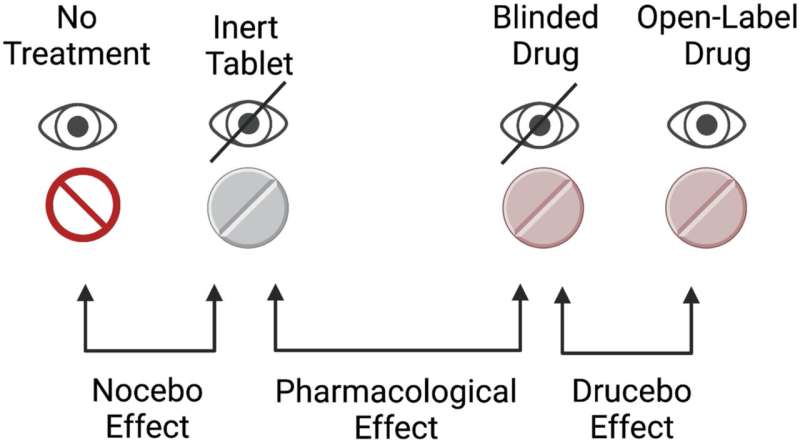International experts recommend ways to improve adherence to statin therapy

For the first time, an international group of experts has issued recommendations to doctors about how to distinguish between true side effects caused by statins (that have been prescribed in order to lower cholesterol levels) and side effects arising due to patients' expectations that they will occur.
The position paper from the International Lipid Expert Panel (ILEP), published in the Journal of Cachexia, Sarcopenia and Muscle, describes the so-called "nocebo/drucebo" effect and gives a step-by-step approach to diagnosing and managing symptoms, such as muscle aches, so that as many patients as possible continue to take statins, thereby reducing their risk of heart problems, stroke and death.
President of the ILEP, Professor Maciej Banach, of the Medical University of Lodz and the University of Zielona Góra, Poland, who originated these recommendations, said, "There is an enormous worldwide problem with diagnosing statin intolerance correctly. In addition, we know that most diagnosed statin side effects should not, in fact, be attributed to statin therapy. As much as 70% of symptoms may be due to a psychological phenomenon called the 'nocebo' or 'drucebo' effect."
Nocebo refers to adverse side effects that a patient might experience when given a pill containing no active ingredient—an inert tablet. Drucebo refers to the difference in side effects experienced when a tablet containing an active ingredient (in this case, a statin) is taken either knowing that it's a statin or blinded as to whether or not it's a statin or an inert tablet. This provides insight as to the extent to which the symptoms may be due to expectation alone.
Prof. Banach continued: "The 'nocebo/drucebo' effect is when patients' expectations that they will experience side effects from the statins result in them actually experiencing these symptoms. Their knowledge is gained from the internet, leaflets, friends and family and other sources, and the most common side effects are muscle pain and liver complaints. It can result in them discontinuing their therapy and, therefore, increasing their risk of heart problems, stroke and death."
Statins are among the most commonly prescribed drugs and there is strong and unambiguous evidence that statin treatment makes a significant difference in preventing cardiovascular disease and death. A recent meta-analysis showed that the prevalence of statin intolerance is less than 10%. However, as many as one in two patients stop taking statins, reduce the dose or take them irregularly because they believe they are responsible for side effects.
First author of the paper, Dr. Peter Penson, a Reader in Cardiovascular Pharmacology at Liverpool John Moores University, Liverpool, UK, said: "This is the first paper to deal explicitly with nocebo/drucebo effect. It offers practical and evidence-based suggestions, which we hope will be of use to physicians in improving patient-centered care in individuals who are at risk of cardiovascular disease, but who experience adverse effects attributable to their medicines.
"The benefits of statins are not seen immediately by patients, whilst the associated adverse effects are more tangible, and so many patients stop taking statins, thereby putting themselves at risk of serious illness or death. The Personalized Lipid Intervention Plan (PLIP) proposed in our paper helps the patient to understand the reason for their treatment, the large benefits, including that statins may prolong their lives, and the potential harms. This allows the patient to make a fully informed decision about commencing and continuing therapy. The PLIP also summarizes important lifestyle advice to help them reduce their risk of heart attacks and strokes.
"We hope this document will facilitate shared decision-making between patients and prescribers. The recommendations recognize that the vast majority of patients can take statins safely, and that the benefits greatly outweigh the potential risks of side effects. They provide advice about improving adherence to statin therapy, whilst making suggestions for the identification and management of the relatively small number of patients who have true statin intolerance."
The ILEP is made up of over 70 experts worldwide who have contributed evidence and suggestions for the current paper, and who agreed upon the recommendations. The recommendations include:
- That healthcare professionals should consider the nocebo/drucebo effect when they first prescribe statins and provide information to patients about the rationale and benefits of the therapy
- The Personalized Lipid Intervention Plan (PLIP) should be used to help this process. It estimates the patient's 10-year risk of cardiovascular disease with and without statin therapy, as well as providing clear information on adverse side effects, including that muscle symptoms are common but rarely caused by statins
- Routine follow-up to check the safety and efficacy of the therapy
- How to effectively diagnose statin intolerance and exclude nocebo/drucebo effect
- How to manage patients with no biomarkers that indicate abnormalities and with tolerable statin-associated muscle symptoms (SAMS)
- How to manage patients with biomarker abnormalities and/or intolerable SAMS
- Strategies for managing patients with complete statin intolerance.
It also discusses the evidence for non-statin drugs that can be used to lower cholesterol.
Dr. Penson concluded: "It's important that physicians apply their own judgment in the context of the healthcare system in which they work and their knowledge of their individual patients when deciding whether to implement particular recommendations. However, if prescribers find the advice helpful, we encourage them to share it with colleagues."
The authors and the ILEP plan to disseminate their guidelines via national and international training for healthcare professionals, presentations at conferences and webinars, and via interviews, podcasts and lectures on the ILEP website and other specialist websites worldwide.
More information: Peter E. Penson et al, Step‐by‐step diagnosis and management of the nocebo/drucebo effect in statin‐associated muscle symptoms patients: a position paper from the International Lipid Expert Panel (ILEP), Journal of Cachexia, Sarcopenia and Muscle (2022). DOI: 10.1002/jcsm.12960
Ibadete Bytyçi et al, Prevalence of statin intolerance: a meta-analysis, European Heart Journal (2022). DOI: 10.1093/eurheartj/ehac015





















